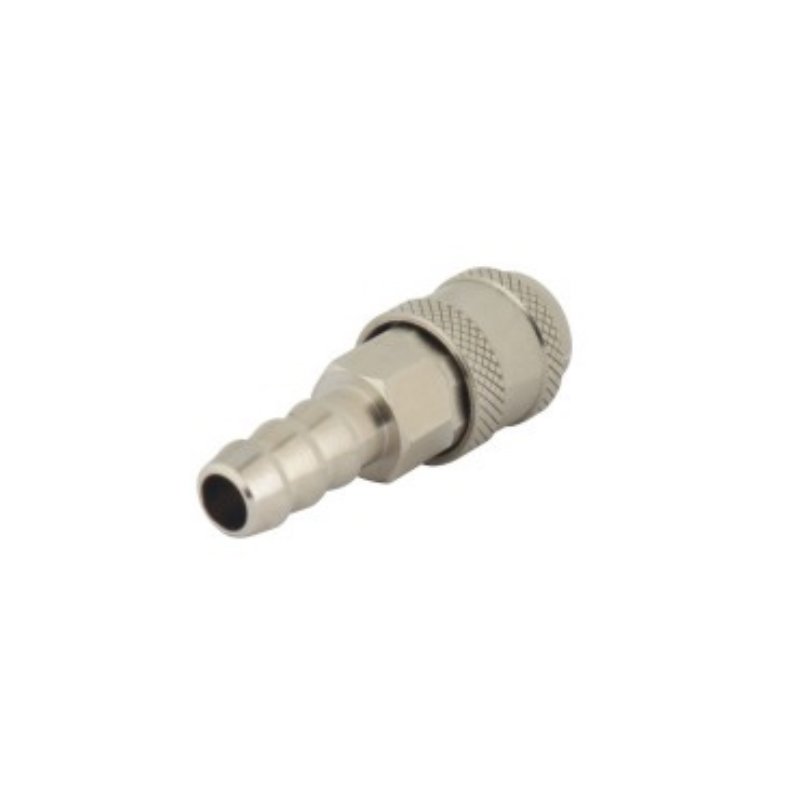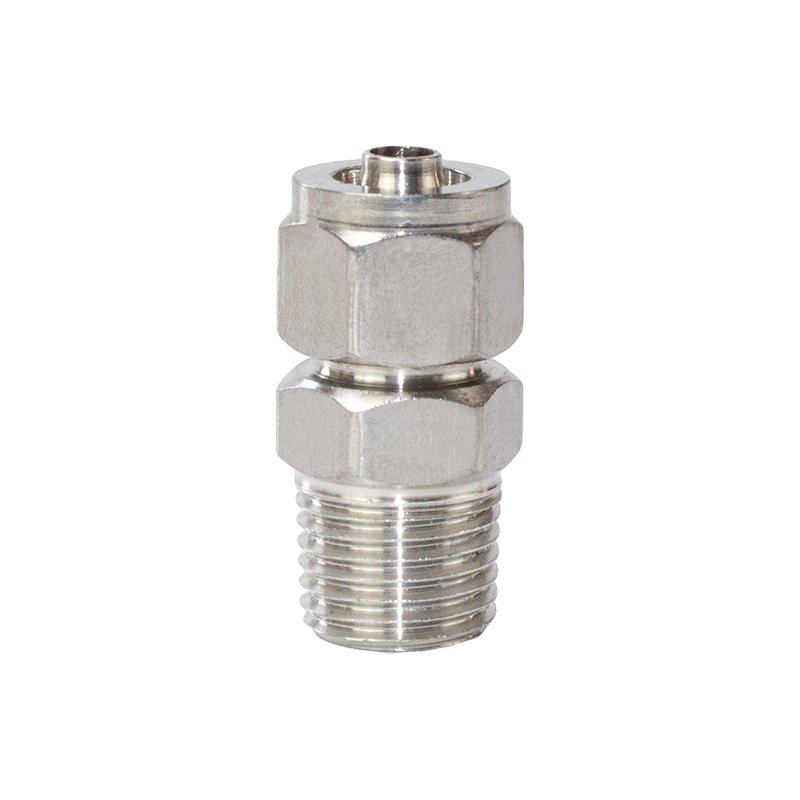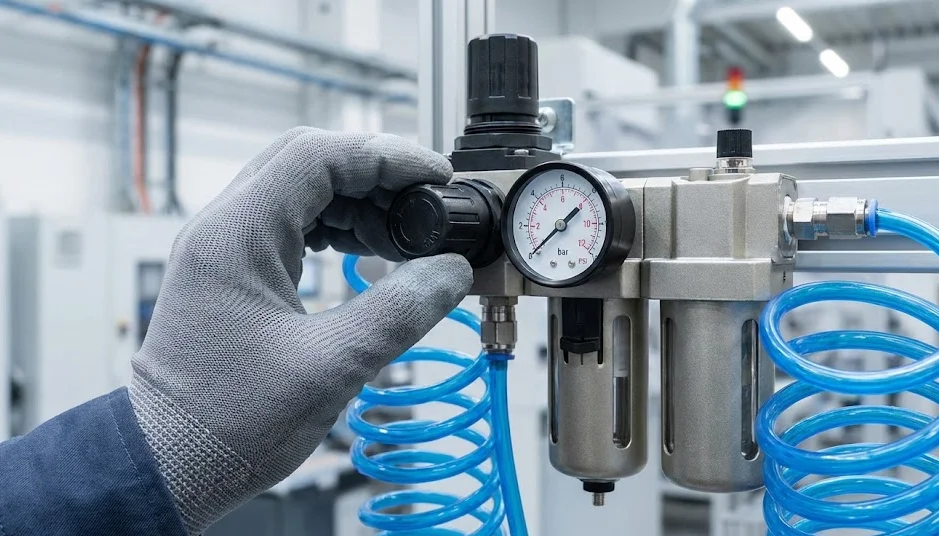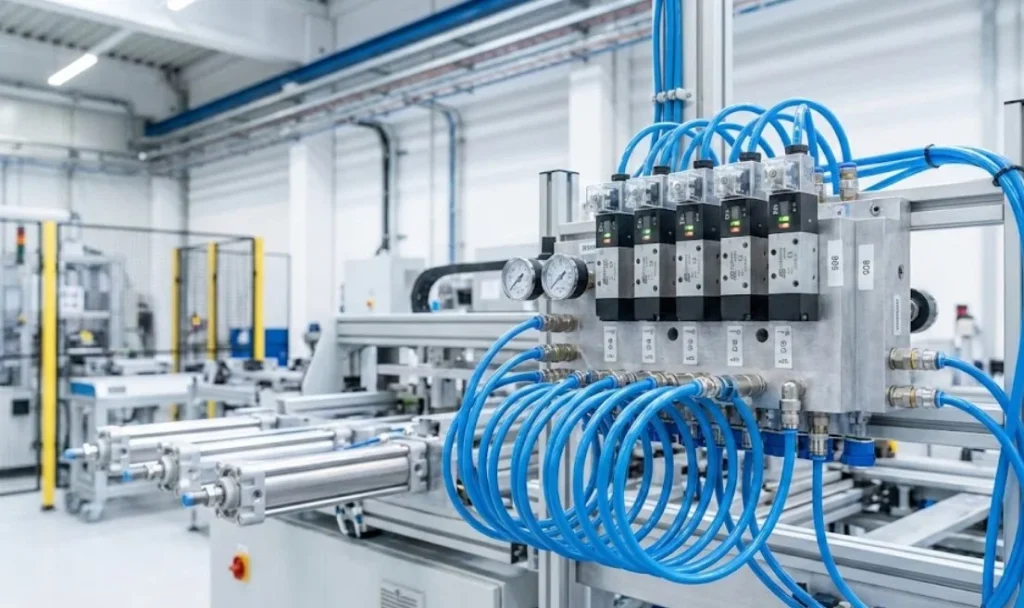A brief introduction to the concept of Mini Cylinder
In modern industry, precision control and space optimization have become indispensable elements in the design and manufacturing process. This trend has led to the development of various compact and high-performance mechanical components, of which Mini Cylinder is one of the best. Mini Cylinder, or micro cylinder (hydraulic cylinder), is a small power actuator that achieves linear or rotational motion through energy conversion of compressed air or liquid media. Compared with traditional pneumatic or hydraulic cylinders, Mini Cylinders are distinguished by their small size and light weight, which makes them particularly suitable for applications where space is limited or high precision is required.
Mini Cylinder is designed to meet the needs of industrial applications with high speed, high precision and long life. They are usually made of high-strength materials such as stainless steel or aluminum alloy to ensure reliability and durability under high pressure and harsh environments. In addition, these micro-cylinders (hydraulic cylinders) are often equipped with a variety of sensors and interfaces and can be easily integrated into complex automation systems for precise control and monitoring.
Mini Cylinder has a wide range of applications, from fine control of automated production lines, fine adjustments of medical equipment, to the assembly of consumer electronics, etc., covering almost all fields that require precision motion control. Their high performance and reliability make Mini Cylinder one of the key components for realizing modern industrial automation and improving production efficiency.

Importance of Mini Cylinder
| Aspect | Description |
|---|---|
| Precision Control | Mini Cylinders can provide highly precise motion control, essential for applications requiring high precision, such as in automated assembly, scientific research equipment, and precision engineering. They are capable of small and precise movements to meet complex operational needs. |
| Space Efficiency | Due to their compact design, Mini Cylinders are particularly valuable in applications with limited space. They can be installed in systems with limited space without sacrificing performance. This characteristic makes Mini Cylinders widely used in aerospace, automotive interior systems, and portable electronic devices. |
| Energy Efficiency | Mini Cylinders are designed to provide the necessary power while consuming less energy, which is crucial for businesses looking to reduce operating costs and improve energy efficiency. Their high energy efficiency performance helps achieve sustainable production goals. |
| Reliability and Durability | High-quality Mini Cylinders are designed to withstand harsh conditions, including high pressure, high temperature, and corrosive environments. This durability ensures long-term reliability, reduces maintenance needs, and lowers the total cost of ownership. |
| Diversity and Adaptability | The diversity of Mini Cylinders allows them to be customized to meet specific application needs, whether it be pressure range, size, or material. This flexibility means that nearly any industrial application can benefit from their precise control. |
Technical definition of Mini Cylinder
The technical definition of Mini Cylinder focuses on its core characteristics as a high-efficiency, miniaturized power actuator. Technically, a Mini Cylinder is a device that uses fluid pressure, whether gas or liquid, to produce linear or rotational motion. They are typically designed to have very compact dimensions, allowing them to operate in space-constrained environments while providing highly precise power delivery.
Core features:
Size and shape: Mini Cylinders are distinguished by their small size and light weight, which make them suitable for applications where space is limited. They can range in size from tiny millimeters to tens of millimeters, depending on application requirements.
Working medium: According to different power sources, Mini Cylinder can be divided into two categories: pneumatic (using compressed air) and hydraulic (using liquid such as oil). Each of these two types of Mini Cylinder has its own specific application scenarios, and which one to choose depends on the required power, speed and environmental conditions.
Power output: Mini Cylinder can provide a wide range of push or pull force, depending on its design, the pressure of the working medium and the area of the piston. This makes them suitable for a wide range of applications from precision control of light loads to heavy load operation.
Control Accuracy: Mini Cylinder design allows very precise speed and position control, which is achieved through precision manufacturing processes and integrated control systems. This high degree of control accuracy is crucial for automation technology and precision engineering.
Materials and Construction: In order to meet the needs of various working environments, Mini Cylinder is usually manufactured from corrosion-resistant and high-strength materials, such as stainless steel or aluminum alloy. They are constructed to optimize mechanical properties and durability while keeping bulk to a minimum.
How Mini Cylinder is different from standard hydraulic or pneumatic cylinders
When discussing the differences between a Mini Cylinder and a standard hydraulic or pneumatic cylinder, it is key to understand their differences in design, size, application and performance characteristics. Although all three devices are power actuators used to convert fluid pressure into mechanical motion, they differ significantly in several ways.
| Aspect | Mini Cylinder | Standard Hydraulic and Pneumatic Cylinders |
|---|---|---|
| Design and Size | Specially designed to be small in size and lightweight, suitable for space-limited or weight-sensitive applications. Mini Cylinders are significantly smaller than standard hydraulic or pneumatic cylinders, allowing for easy integration into compact systems. | Larger in size and volume, designed to provide greater force and range of motion in a broader range of industrial applications. Commonly used in situations requiring substantial push or pull forces. |
| Application Scope | Due to its compact design, particularly suitable for automation equipment, precision engineering, medical devices, and other space-constrained applications. | Because of their larger size and power output, more commonly seen in heavy industry, construction machinery, mining, and agricultural machinery sectors. |
| Performance Characteristics | Despite the small size, designed with a focus on high precision control and response speed, capable of providing accurate motion and positioning. | Emphasizes strong thrust and stable movement capabilities, suitable for heavy-load and high-force requirements applications. |
| Power Output | Typically designed for lower power output, but sufficient to meet the needs of precision control and light-load applications. | Capable of providing very high power output, suitable for applications requiring significant force for task execution. |
Different types of Mini Cylinder
Here is the content formatted as a table in English, describing different types of Mini Cylinders and analyzing their characteristics, advantages, and limitations:
| Type | Characteristics | Advantages | Limitations |
|---|---|---|---|
| Standard | Designed for general applications where space is not highly restricted. Offers a balance between size, force, and cost. | Versatile application range; Good balance of performance and cost; Relatively small size. | May not fit the most space-constrained applications. |
| Compact | Features a very small footprint for use in extremely space-constrained applications. Prioritizes space-saving over force output. | Ideal for very limited spaces; Minimal impact on overall system size; Can be integrated into highly compact systems. | Lower force output compared to standard and heavy-duty types; May not be suitable for high-load applications. |
| Heavy-Duty | Engineered to provide higher force output in applications requiring more power. Slightly larger than compact models but still smaller than traditional cylinders. | Higher force output suitable for demanding applications; More robust construction; Can handle higher pressures and loads. | Larger and more expensive than compact models; May still be too small for some high-power applications. |
Basic working principle of Mini Cylinder
The working principle of the Mini Cylinder relies on its power source, which is to produce linear or rotational motion through fluid (gas or liquid) pressure or electricity. Whether it is a pneumatic, hydraulic or electric Mini Cylinder, its core purpose is to convert input energy into mechanical motion to achieve pushing or pulling actions.
Pneumatic Mini Cylinder
The pneumatic Mini Cylinder uses compressed air to create motion. When compressed air enters one end of the cylinder, the air pressure pushes the piston, which creates linear motion. The discharge and suction of gas are regulated by the control valve, thereby realizing the reciprocating motion of the piston. This type of Mini Cylinder is characterized by fast response, simple maintenance and relatively low cost.
Hydraulic Mini Cylinder
Hydraulic Mini Cylinder uses the pressure of a liquid (such as oil) to drive a piston to move. The hydraulic pump pressurizes the liquid into the cylinder, and the pressure of the liquid causes the piston rod to move linearly. The hydraulic system can provide greater power and is suitable for occasions requiring high power output. Compared with the pneumatic system, the hydraulic Mini Cylinder provides greater power, but the system is more complex and the cost is relatively higher.
Electric Mini Cylinder
The electric Mini Cylinder utilizes the rotational motion of an electric motor and converts it into linear motion through a mechanical device (such as a screw or gear). This type of Mini Cylinder is suitable for applications requiring precise control of position, speed and force. Electric Mini Cylinders can provide smooth and continuous motion, but may require complex control systems and relatively high energy consumption.
Application fields of Mini Cylinder
Due to its compact design and efficient performance, Mini Cylinder has applications in multiple fields, including but not limited to:
- Automation and Robotics: Mini Cylinder is used in various automation equipment and robots to achieve precise control and movement.
- Medical Equipment: The Mini Cylinder is very popular in the medical industry, especially in those applications where space is limited and a high degree of precise control is required.
- Consumer Electronics: In small consumer electronics, such as focusing systems for camera lenses, the Mini Cylinder is used to perform fine adjustments.
- Precision Engineering: In areas requiring high-precision machining and movement of tiny parts, the Mini Cylinder provides the necessary precision and reliability.
Installation of Mini Cylinder
Proper installation of your Mini Cylinder is essential to ensure its performance and longevity. Here are some basic steps and considerations:
- Read the instructions: Before installation, carefully read the instructions provided by the manufacturer. It is important to understand the installation requirements and technical specifications of your specific model.
- Choose the right location: Make sure the installation location can handle the workload of the Mini Cylinder and has enough space for installation and future maintenance work.
- Alignment Positioning: Properly position the Mini Cylinder to ensure it is aligned with drive components such as the piston rod. Improper alignment can cause premature wear or reduced performance.
- Connecting pipes: For pneumatic or hydraulic Mini Cylinder, make sure all pipe connections are sealed and secure to avoid leaks. Use the correct type of sealing material and tubing.
- Electrical Connections: For electric Mini Cylinder, connect the power and control wiring correctly. Make sure electrical connections meet safety standards.
- Test Runs: Before full load, conduct a series of test runs to verify Mini Cylinder’s performance. Check for unusual sounds or leaks and make sure all controls are functioning properly.
Maintenance and Troubleshooting of Mini Cylinder
Basic maintenance
Regular maintenance can significantly extend the life of your Mini Cylinder and maintain its performance. Here are some basic maintenance recommendations:
- Regular Inspections: Regularly inspect all parts of the Mini Cylinder, including seals, connections and piston rods. Look for signs of wear, damage, or corrosion.
- Clean and Lubricate: Keep the outside of your Mini Cylinder clean and lubricate it with the appropriate lubricant as recommended by the manufacturer to reduce wear.
- Check lines: Check pneumatic or hydraulic system lines and connections regularly to make sure there are no leaks. For electric Mini Cylinder, check the electrical connections and wiring.
- Follow the manufacturer’s maintenance schedule: Follow the manufacturer’s recommended maintenance schedule and procedures, including replacement of worn parts and periodic performance testing.
Trouble Shooting
- Decreased performance or sluggish response: Check for leaks, clogged lines, or electrical connection issues. Make sure the Mini Cylinder is not overloaded.
- Increased noise: This may be due to wear, incorrect installation or insufficient lubrication. Check and replace damaged parts and re-lubricate.
- Unsmooth movement: Check alignment and connections to make sure there are no physical obstructions. For pneumatic or hydraulic systems, check for air entering the system or hydraulic oil contamination.

Mini Cylinder Selection Guide
Choosing the right Mini Cylinder is critical to ensuring the performance and efficiency of your application. Here are some key factors and suggestions to consider during the selection process:
1. Application requirements
- Load Requirements: Evaluate the push or pull force required in the application and select a Mini Cylinder that can provide sufficient force output.
- Movement type: Select the corresponding Mini Cylinder according to the required movement type (linear or rotation).
- Speed and accuracy: Determine the speed and control accuracy requirements of the application and select a Mini Cylinder that can meet these requirements.
2. Dimensions and installation space
- Space limitations: Consider the size of the installation space and choose a Mini Cylinder of appropriate size. The compact design is particularly useful in space-constrained applications.
- Installation method: According to the installation location and method (for example: end installation, side installation), select a Mini Cylinder with appropriate installation configuration.
3. Pressure range
- Working Pressure: Select Mini Cylinder based on the working pressure range of the application. Pneumatic mini cylinders typically operate in the lower pressure range, while hydraulic mini cylinders are suitable for higher pressure applications.
4. Materials and Durability
- Environmental conditions: Consider the environmental conditions in which Mini Cylinder works, such as temperature, humidity, corrosive media, etc. Choose materials and seals that are suitable for specific environmental conditions, such as stainless steel or aluminum alloys, as well as oil- and corrosion-resistant sealing materials.
- Durability requirements: For applications requiring high durability and long-term stability, choose the Mini Cylinder, which is ruggedly constructed and easy to maintain.
5. Compatibility
- Media compatibility: Ensure that the Mini Cylinder’s materials are compatible with the working media (such as compressed air, hydraulic oil) to prevent corrosion and damage.
- Control system compatibility: For Mini Cylinder that needs to be integrated into an automation system, ensure that its control interface is compatible with the existing system.
6. Manufacturers and suppliers
- Brand and Quality: Choose a well-known brand and reputable manufacturer to ensure the quality and performance of your Mini Cylinder.
- After-sales service: Consider the manufacturer’s technical support and after-sales service to ensure that you can get necessary help and replacement parts during use.
Conclusion
As a compact and efficient power actuator, Mini Cylinder plays a vital role in various fields of modern industry. Through its precise motion control and adaptable design, Mini Cylinder meets the needs of a variety of applications such as automation, precision engineering, and medical equipment. It performs particularly well in situations where space is limited or high-precision control is required. Whether pneumatic, hydraulic or electric type, Mini Cylinder provides efficient solutions to support the development and innovation of modern industry.
Proper selection, installation and maintenance of the Mini Cylinder is critical to ensuring its performance, extending its service life and improving the overall efficiency of the system. By considering application requirements, size, pressure range, materials, environmental conditions and other factors, the most suitable Mini Cylinder can be selected to meet specific application needs. At the same time, following the manufacturer’s maintenance guidelines and performing regular inspections can maximize the performance of your Mini Cylinder and prevent potential failures.








